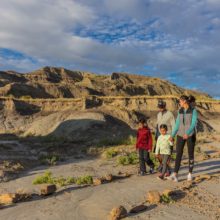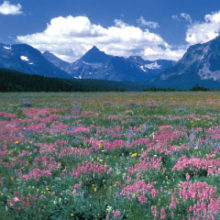Headwaters Economics researched funding needs for wildlife conservation, working lands, and recreation in Montana and produced a report for the Montana Outdoor Heritage Project. Excerpts from the report are below. The full report includes further discussion, research methods, and data sources.
Land, water, and wildlife are critical to long-term economic development and community identity in Montana. As Montana’s population grows and diversifies, and as more people recreate in Montana’s great outdoors, stewardship of farms and ranches, wildlife habitat, parks and trails, and access to rivers and land requires thoughtful planning and investment.
But resources to protect Montana’s outdoor heritage and access to the outdoors are limited and have not kept pace with growing demand. Funding needs for working lands, wildlife conservation, and recreation in the state exceed federal, state, and private budget allocations and are not being met. For example, between 2010 and 2017 visitation at Montana’s state parks increased by 40% while park budgets decreased by 2%.
The federal government plays a crucial role in funding working lands, wildlife management, parks and trails in Montana, but federal funding doesn’t cover all of Montana’s needs. Some federal sources can be unpredictable from year to year. Additionally, federal funds often require matching funds from state, local, and private sources. Montana is one of 14 states without statewide funding programs for conservation or recreation.
Funding needs for working lands, wildlife conservation, and outdoor recreation across the state are not being met. The following sections summarize the non-federal investment needs for working lands, wildlife, parks and trails around Montana based on available data.
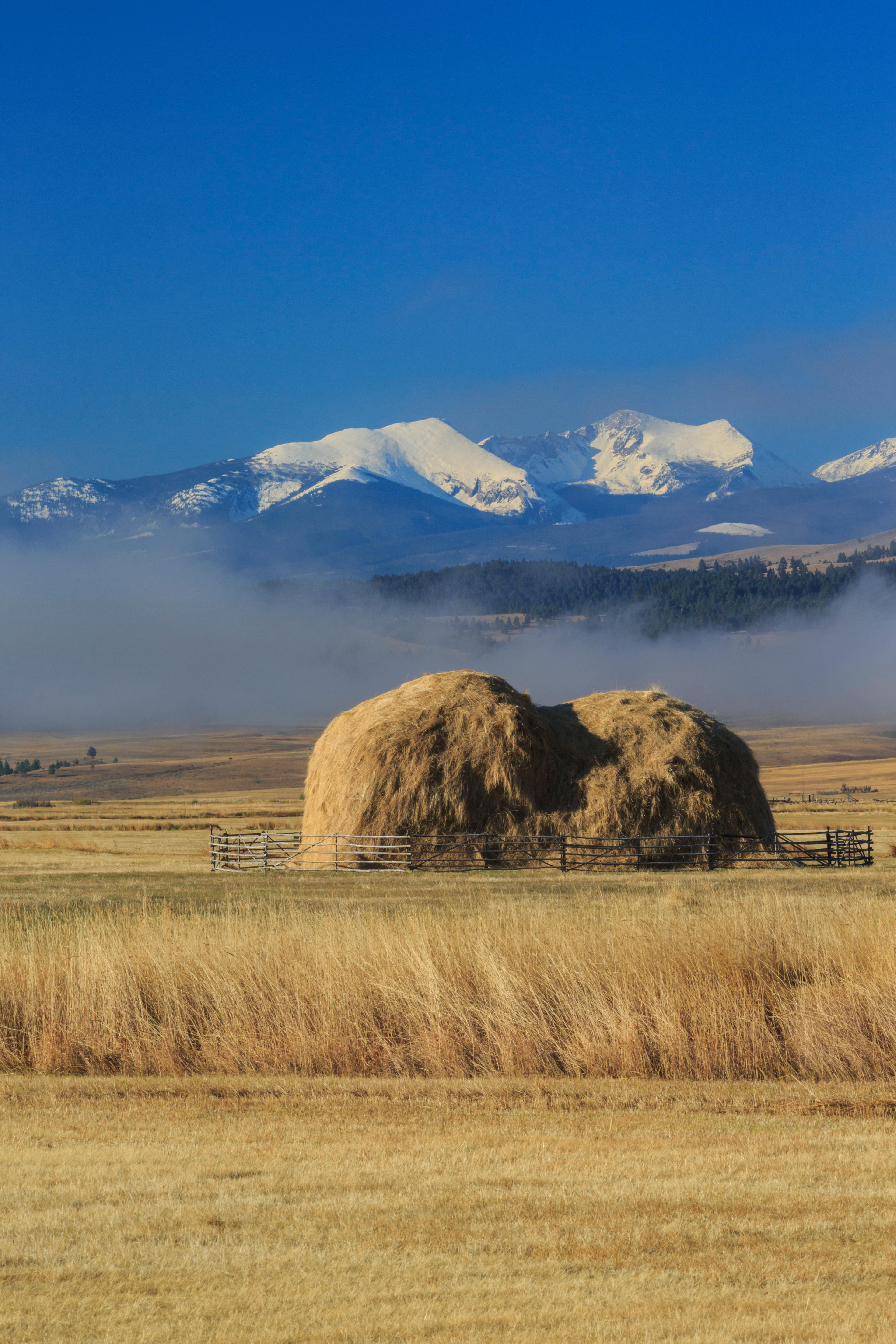
Funding Montana’s Working Lands
Unmet need: $12.4+ million/year
Montana’s private working lands—farms, ranches, and forests—comprise more than half of the state and are an essential piece of the state’s natural resource legacy. These lands contain prime agricultural soil, corridors connecting wildlife habitat, and can provide access to public land. They create a buffer between wildfire and our communities. And they can protect and improve downstream water quality. As our state’s population grows, the pressure to develop private land will continue to grow. Since 1990, 1.3 million acres of Montana’s open space has been converted to housing. Rapid development of private lands limits the economic viability and productivity of family farms and forests.
Thanks to the vision of watershed collaboratives, tribal and state forest stewardship programs, and private landowners, Montana is a national leader in working land conservation with programs to mitigate wildfire risk, reduce wildlife conflicts, and conserve prime soils. More than 2.5 million acres of working farms and ranches, wildlife habitat, timber lands, and river corridors have been protected through voluntary conservation easements.
However, funding for conservation agreements is limited and highly competitive. In 2019, Montana landowners, in partnership with nonprofit land trusts, submitted more than $33.6 million in proposals for federal and state conservation funding programs, but only $21.2 million were approved, leaving a $12.4 million funding gap. This funding gap does not include the wildlife conservation and conflict reduction programs that occur on private land and help to keep working lands viable.

Funding Montana’s Wildlife
Unmet need: $15+ million/year
Wildlife is a defining characteristic of Montana—62% of Montanans participate in wildlife-associated recreation such as wildlife watching, hunting, and fishing. Montana ranks in the top five states for hunting and fishing participation.
Managing wildlife requires collaboration among state and federal agencies, nonprofits, and private landowners. Investments in habitat protection and improvement protect our hunting and fishing heritage and the economic benefits it generates.
Wildlife management is funded largely by hunting and fishing licenses and federal excise taxes on firearms, archery equipment, and fishing gear. Montana’s wildlife faces threats from invasive species such as zebra mussels and diseases such as Chronic Wasting Disease. New funding could help address species of concern and ensure that FWP can maintain robust game management.
The Montana Wildlife Future Group evaluated funding needed to supplement that provided by hunters and anglers and ensure the long-term survival of all of Montana’s wildlife—game and nongame. Habitat conservation projects require about $8.5 million annually. Ongoing education, research, land acquisition, and conflict resolution programs (for example, the Blackfoot Challenge and range-rider programs) require another $6.5 million annually.
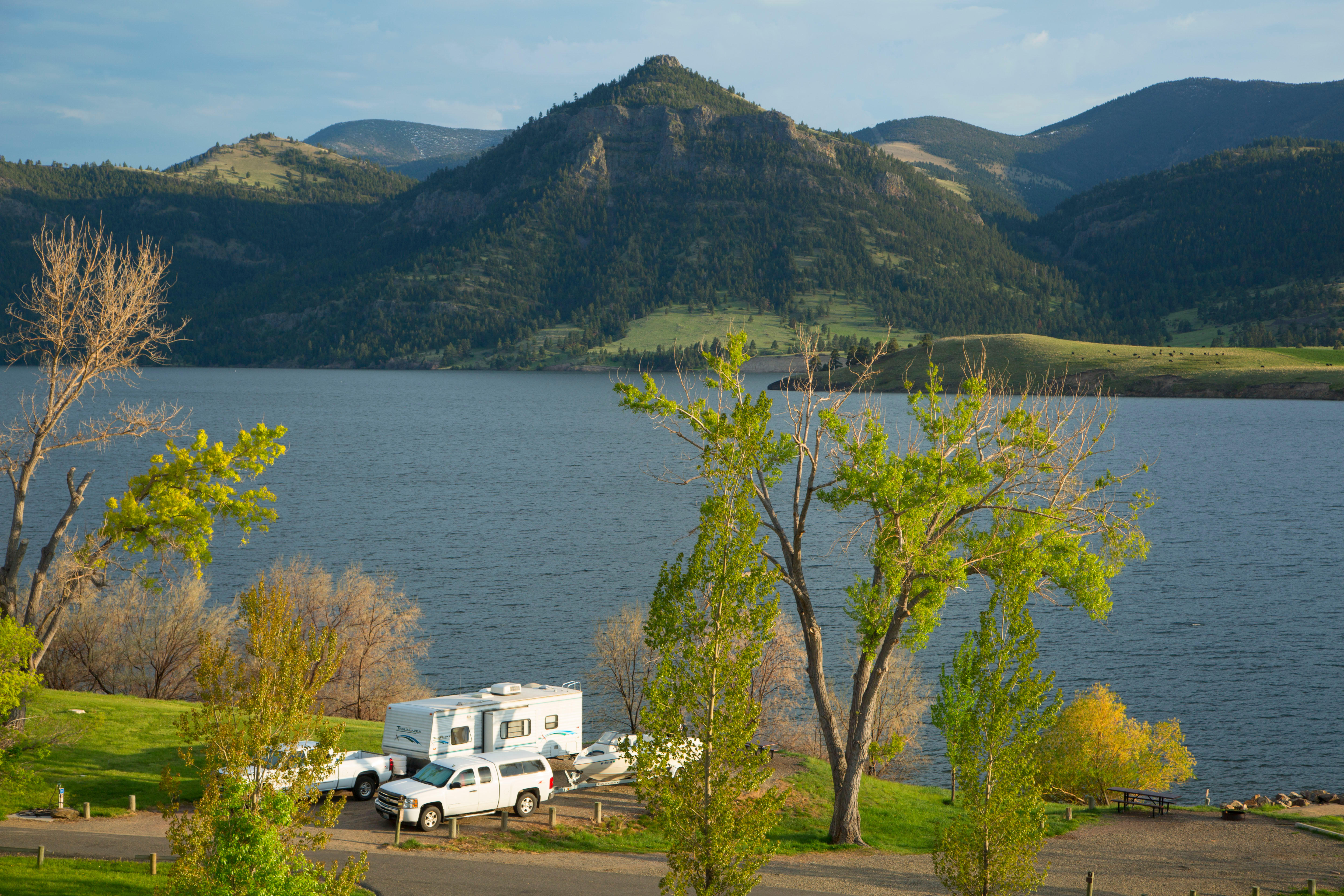
Funding Montana’s State Parks
Unmet need: $25.7+ million/year
Montana’s 55 state parks showcase our natural and historical heritage across the state and host 2.5 million visits every year. State parks are popular with residents: 53% of Montanans surveyed in 2018 had visited a state park during the previous 12 months.
State parks also benefit nearby communities. Visitors from outside the state spend more than $122 million in Montana each year, creating 1,600 jobs.
Montana has more parks than any other state in the region, but other states fund and staff their parks and recreation and historic sites at a much higher level than Montana. On average, Montana’s state parks budget and number of employees per park are 73% lower than neighboring states.
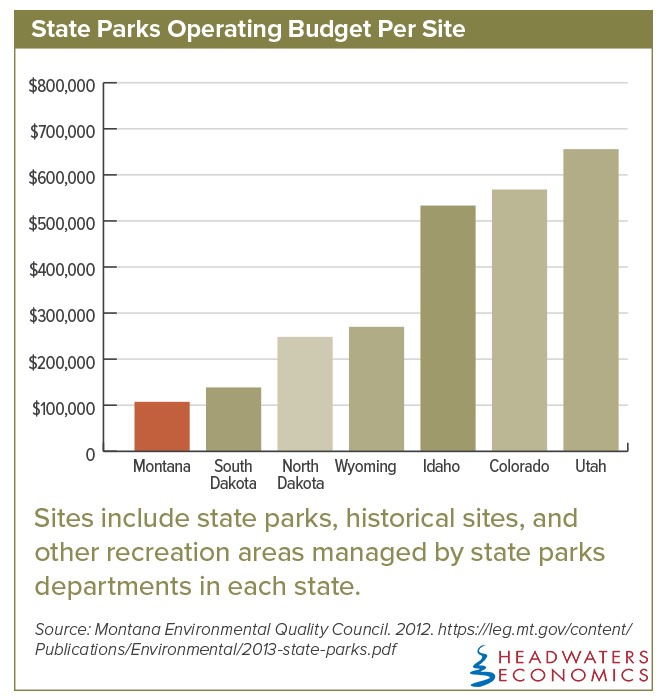
Despite their growing popularity, Montana’s state parks are consistently underfunded and suffer from a $25.7 million maintenance backlog. This does not address future recreation needs of a growing population, only past unmet obligations. Underfunding has also led to missed opportunities to improve facilities, acquire land to expand and add new parks, maintain and improve campgrounds, and create educational programming. SB 24, a trails and recreational facilities grant program passed in 2019, will help address some needs for parks, but will not meet all of it.
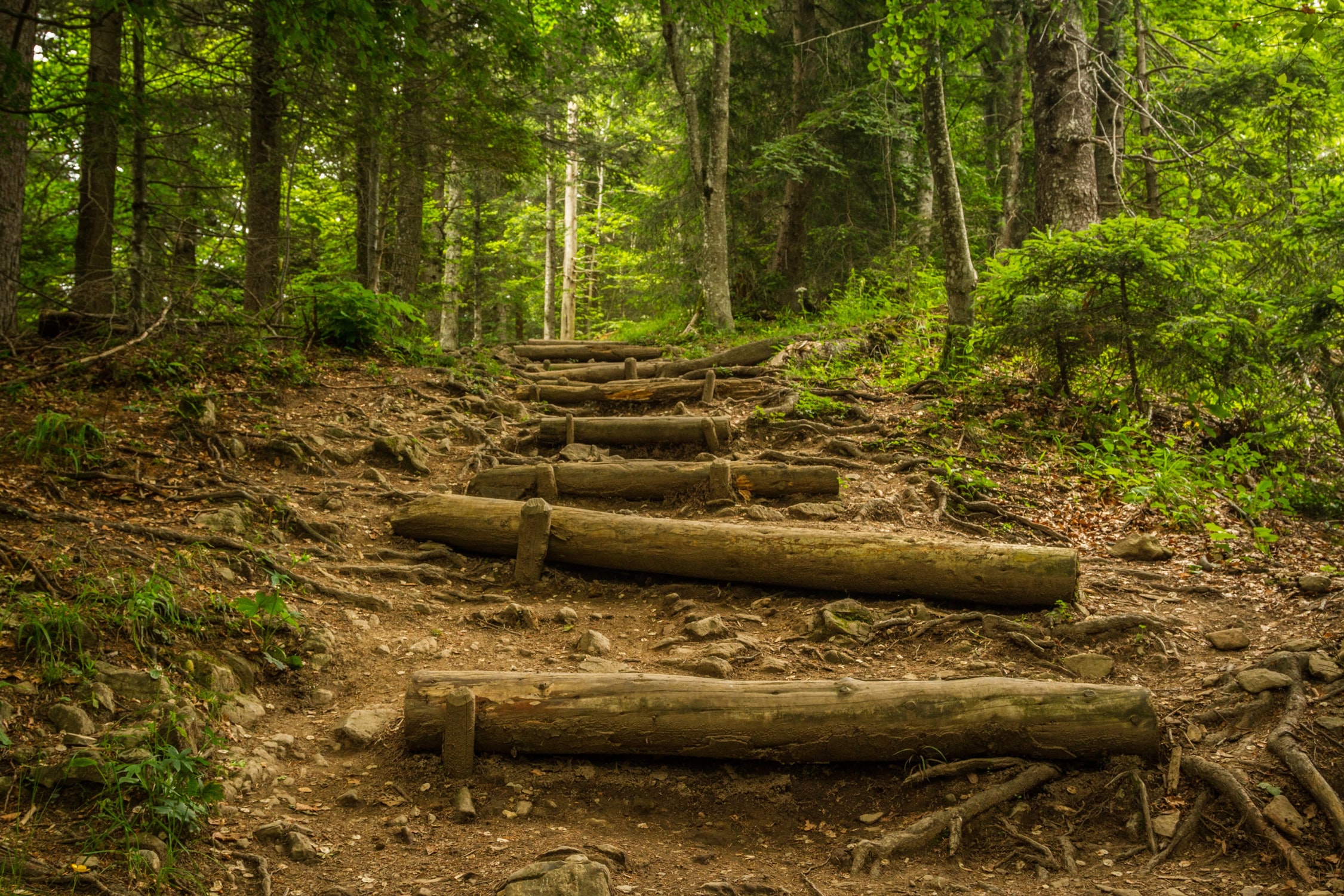
Funding Montana’s Trails
Unmet need: $7.1+ million/year
Trails benefit communities by increasing business, improving public health, and increasing property values. Trail use and visitation has climbed in Montana with 72% of Montana households using trails each year. Nearly 30% of Montanans over age 15 participate in motorized recreation.
Trails around the state are managed by federal, state, local, and private organizations. However, federal budgets have been declining. The U.S. Forest Service budget, for example, has dropped by $36 million (40%) over the last decade. The federal funding decline means trails on federal lands are not being built or maintained sufficiently. A matching state funding source could help federal dollars go farther.
The two largest federal programs—the Land and Water Conservation Fund (LWCF) and Recreation Trails Program (RTP)—awarded $2.9 million in grants to Montana in 2018 for projects such as trail access and trail construction. However, more than $1 million of requests to RTP were not funded in 2018 alone. From 2014 to 2018, there was a $6.8 million gap between trail projects proposed to RTP and funding awarded.
Other funders are also seeing more proposals than can be funded. Over the last five years, proposals to the National Forest Foundation for trail-related work were double the funding available, leaving a $300,000 gap.
Lessons from Other States
Thirty-six states have adopted programs to creatively invest in conservation or outdoor recreation and ensure that outdoor opportunities meet growing demand, are sustainable, and are accessible by all communities—from the biggest cities to the smallest towns.
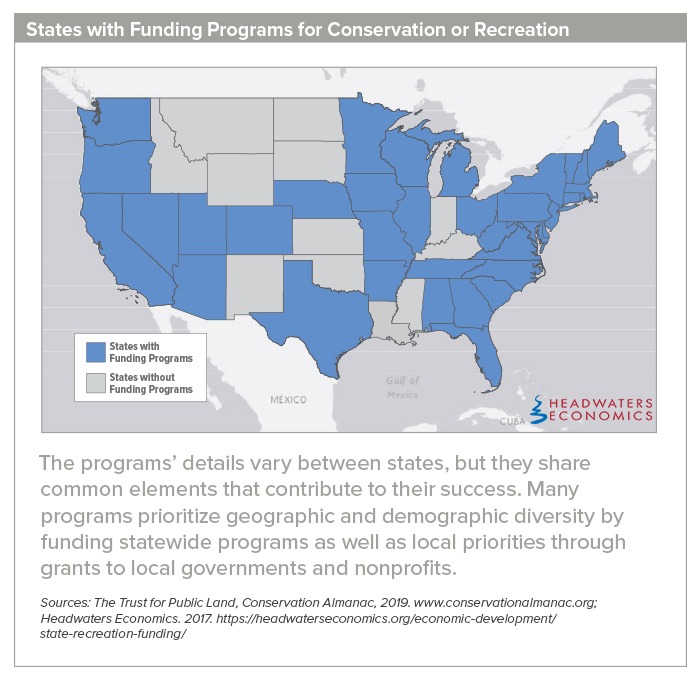
State programs for working lands, conservation, and recreation range in size from a few hundred thousand dollars to hundreds of millions each year. They generate funds from a variety of sources, including bonds, lottery proceeds, sales taxes, and oil and gas revenue. Many programs distribute funds to state parks or other state agencies, as well as to local governments, private landowners, and nonprofit organizations through grant programs.
Most state programs leverage the public investment of dollars with partnerships, matching contributions, and prioritization of projects where multiple, overlapping goals can be met. The most robust state funding programs have transparent processes, dedicated funding sources, and prioritize demographic and geographic diversity.
Montanans value the land, water, wildlife, and recreational opportunities of the Big Sky state. As Montana changes and grows, stable funding at the statewide level can ensure these resources benefit more people.
Methods & Data Sources
Report data is derived from publicly available sources. For a complete listing, please see the full report. The dollar amounts in each category represent what is known currently about funding needs for conservation and recreation in Montana, but they require two caveats.
First, these numbers do not provide an exhaustive accounting of unmet needs. For example, we know more than $1 million in trail-related grant applications are not awarded each year, but this does not account for the applications that were not submitted because a local match was not available or a community could not provide up-front funding. For this reason, the funding needs provided in this report are low estimates of total need.
Second, the unmet needs for each category cannot be summed to one number. In some cases, the needs for individual categories overlap (e.g., working land conservation and wildlife habitat protection).
Additionally, it is important to note that the estimates in some categories are annual and in other categories they are one-time or long-term estimates.
Funding sources evaluated include:
- Land and Water Conservation Fund (state-side matching grants, administered by Montana State Parks)
- Montana Fish Wildlife and Parks budgets
- Montana Fish & Wildlife Conservation Trust
- Montana Recreational Trails Program
- National Forest Foundation
- USDA Forest Service budget
- USDA Forest Services’ Forest Legacy Program
- USDA Natural Resource Conservation Service’s Agricultural Conservation Easement Program
Unmet funding needs for wildlife conservation were derived from a January 2019 report by the Montana Wildlife Future Group. Public access is not estimated separately because it is accounted for in the other four categories.


